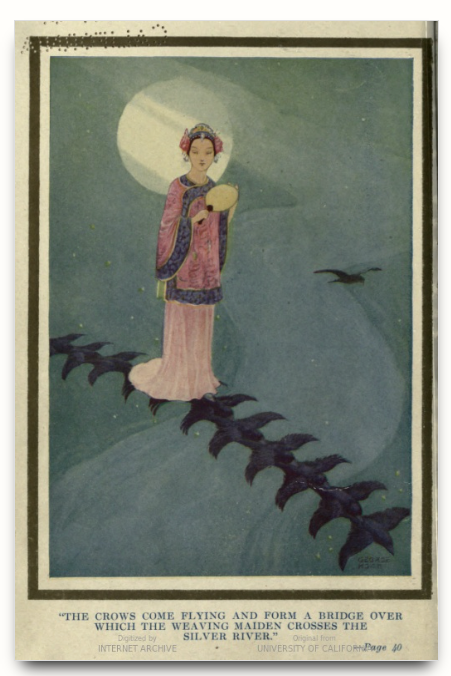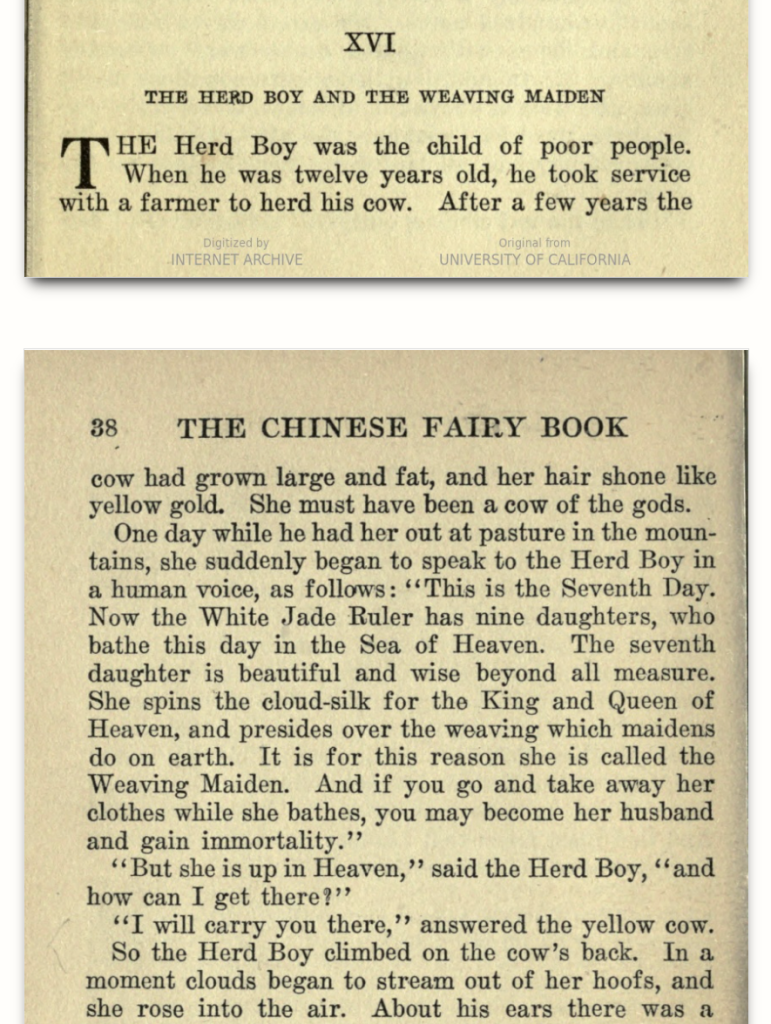Translating Chinese
My collection is focused on the translation of Chinese nouns, such as names, cities, etc. The collection includes works across the times and topics to discover the evolution and different approaches of the translation method. Specifically, how did the writers and translators use the English alphabet to mimic Chinese pronunciation?
As I clicked through the interactive map, I was intrigued by the Hindu devilry story, so I started searching for folklore and story in China. Searching non-Roman language in HathiTrust is a huge issue since when I search for keywords such as folklore or folktale, not many relating results came out. It was really helpful to learn from the librarians to search for the corresponding word in Chinese. So instead of folklore, I searched for “min zu gu shi”. Many works in Chinese do not have an English title, and they are titled with the pronunciation of the Chinese title. https://babel.hathitrust.org/cgi/pt?id=coo.31924079725788&view=1up&seq=2&skin=2021Links to an external site. This is a collection of literature from the Yunnan minority in China and the title is “Yunnan shao shu min zu wen xue lun ji”.


This is a Chinese folktale. It is included in one of the books in my collection. The other stories in the book helped me examine the difference in character names compared to the modern standard translation. Although this particular story did not serve that purpose, the story connects me to the tales of Hindu devilry in the hyperlinked lightning talks. Both of these are English translation of folktales from a different culture that suffers from cultural and pronunciation differences.
As mentioned by one of my classmate Conor McCarty Durkin, “a note or a message“ can fail to be “captured by algorithms and search engines in the same way a human might”. The loss of information is even true for human translation. I have read the story in both Chinese and English. Since folktales are closely related to the cultural background, the translator from another culture is hard to capture the underlying meaning or the “atmosphere” even when they understand every word.
The screencast displays a search of the subject of a book’s catalog record. The translation method in this book is very old. The tonal mark in the title “The rambles of the Emperor Ching Tĭh in Këang Nan” is no longer used in today’s translation. I believe Këang Nan is the equivalent of Jiang Nan in today’s Chinese typing system. However, I could not find the historical figure in Chinese history based on the name provides in the book. It is even more interesting yet frustrating that when I search the subject, this book is the only thing that appears in the result, and I begin to doubt if it is only a fictional character.
This makes the search for related content very difficult, and this is an issue that also happens for other languages, such as Hindi. The Key word here is “evolution”, which occurs in writing system as time passes. For the google book discussed in the Sawyer Seminar, the issue really is, how do you correlate these contents that are essentially the same thing only spelled differently?
The Chinese translation is talked about extensively in the Sawyer Seminar by Xiaoxi Zhang . The evolution of writing system not only effects translation, but more commonly, the literature itself. The words in the Chinese version of the crescent moon are formatted vertically, and that is a common occurrence during the republican time because the Chinese wrote from right to left and from top to bottom ever since the dynasty era. https://babel.hathitrust.org/cgi/pt?id=inu.32000011091339&view=1up&seq=3&skin=2021Links to an external site. This is another example of older Chinese text. In fact, this special format was shared by a lot of Asia Countries because they were influenced by the Chinese culture. This is an example in Japanese https://babel.hathitrust.org/cgi/pt?id=mdp.39015083054752&view=1up&seq=1&skin=2021 Links to an external site. and you can see the text in also written vertically. Perhaps evolution is also evident in a single language. In the post by Kimberly K Liang, her collection is about the progress of how Chinese literature have evolved from ancient to contemporary.
Category: evolution
Under this category, I am able to connect my work with posts of Kimberly K Liang and Michael J Briggs.
Translating Chinese Read More »



You must be logged in to post a comment.